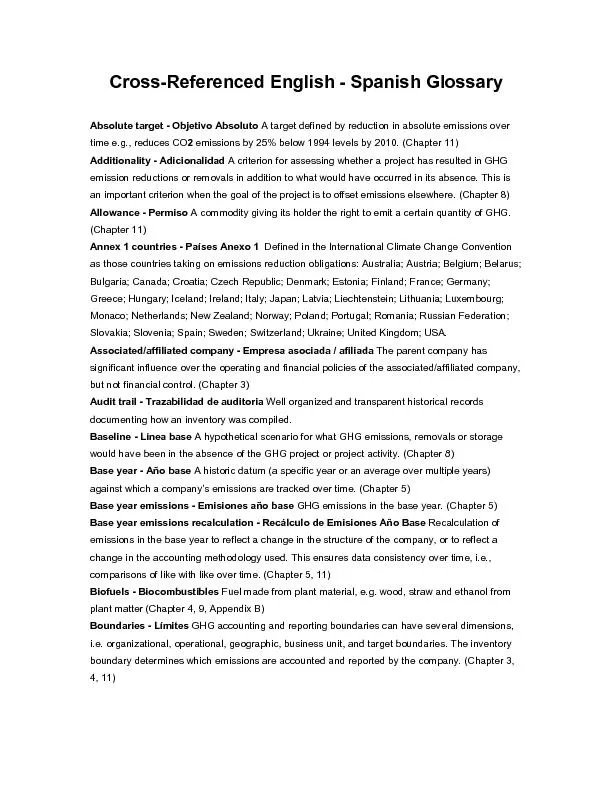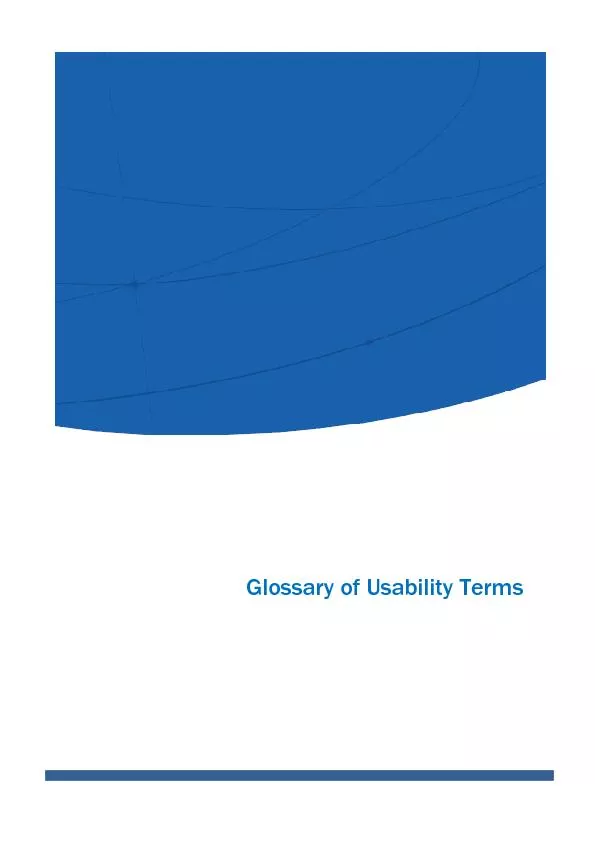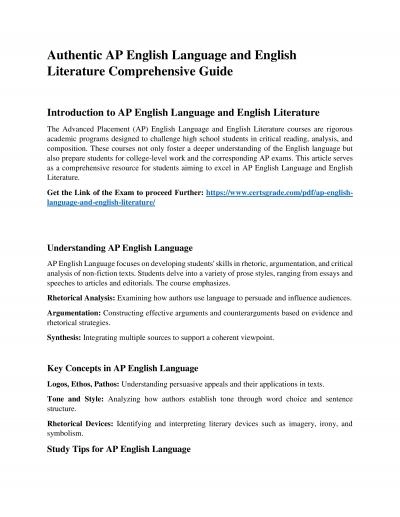PDF-Cross-Referenced English - Spanish Glossary Absolute target - Objetivo
Author : luanne-stotts | Published Date : 2016-03-10
Cap and trade system A system that sets an overall emissions limit allocates emissions allowances to participants and allows them to trade allowances and emission
Presentation Embed Code
Download Presentation
Download Presentation The PPT/PDF document "Cross-Referenced English - Spanish Gloss..." is the property of its rightful owner. Permission is granted to download and print the materials on this website for personal, non-commercial use only, and to display it on your personal computer provided you do not modify the materials and that you retain all copyright notices contained in the materials. By downloading content from our website, you accept the terms of this agreement.
Cross-Referenced English - Spanish Glossary Absolute target - Objetivo: Transcript
Cap and trade system A system that sets an overall emissions limit allocates emissions allowances to participants and allows them to trade allowances and emission credits with each other Chapter 2. THE
NEW ZEALAND
CURRICULUM
Standards
-
Referenced, Criterion
-
Referenced, Norm
-
Referenced: Explaining
the difference.
INTRODUCTION
The New Zealand Curriculum
(NZC) National Standards are being im Overview. Charter. To . define terms and abbreviations that are used in communication relating to CIMI and which may not be commonly understood, or those required for logically grouping these terms, and to document these definitions in a commonly accessible . Serials Acquisitions Glossary 5 - A volume of a set or series added to a library Glossary of Usability Terms
Glossary of Usability TermsTable of Contents .............................................................................................................................. Raymore-Peculiar School District. Fall 2014. What is Standards-Referenced grading and reporting?. Definition. Feedback. SRR is made up of marks on a scale from 1 to 4. Marks are not a comparison of one student to another, but rather a way to measure how well a student is understanding a Learning Target or Power Standard. This feedback reports student learning more accurately and to the degree to which students have attained mastery. . A . cognate . is a word that has the same or similar . meaning. and similar . pronunciation. in English and Spanish. . Let's check them out. !. camel. Copyright 2016 abcteach.com. What is a cognate?. Holli Hamilton TCUK17. Glossaries in the searchable world. Glossary use in web-based help. Search-centric documentation sites. Unable to find a clean definition . Still search-centric. Also includes a glossary in the “Basics” guide. Glossary Glossary a . Atheism Definition Atheism is the lack of a belief in gods, and therefore an atheist is someone who does not have a belief in any gods. They might or might not actively believe that particular gods don’t exist. Atheists might follow the practices of a religion for cultural or spiritual reasons and some religions which do not include a belief in gods might have atheist members. Chapter 21 Absolute Monarchs in Europe 1500-1800 Section 1 Spain’s Empire and European Absolutism pg. 589 - 595 Introduction to Absolutism Spain’s Powerful Empire Philip II comes to power in Spain Guideline Criterion Referenced Grading GRADEPOINTS very little about what Sources / Articles OConnor K 2002 How to Grade for Learning Glenview IL Pearson Education [EBOOK] Getting Started with Spanish: Beginning Spanish for Homeschoolers and Self-Taught Students of Any Age (homeschool Spanish teach yourself Spanish learn Spanish at home)
http://skymetrix.xyz/?book=0979505135 Certificado Profesor de Español como Lengua Extranjera Nivel Básico- Prof. Julio Awad Certificado Profesor de Español como Lengua Extranjera - Nivel Avanzado - Prof. Julio Awad Discover the nuances of AP English Language and English Literature with this detailed guide. Explore key concepts, study tips, and resources to excel in these challenging courses.
Download Document
Here is the link to download the presentation.
"Cross-Referenced English - Spanish Glossary Absolute target - Objetivo"The content belongs to its owner. You may download and print it for personal use, without modification, and keep all copyright notices. By downloading, you agree to these terms.
Related Documents











![[EBOOK] Getting Started with Spanish: Beginning Spanish for Homeschoolers and Self-Taught](https://thumbs.docslides.com/1008295/ebook-getting-started-with-spanish-beginning-spanish-for-homeschoolers-and-self-taught-students-of-any-age-homeschool-spanish-teach-yourself-spanish-learn-spanish-at-home.jpg)


